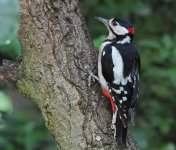Roynato
Member

Good evening friends. I'm new here, happy to meet you all and if it wouldn't be too much trouble, I would appreciate some tips on the matter ahead.
I have been taking bird pictures with only my smartphone ever since I really got into the hobby a couple of years ago, and now I'm considering getting my first camera.
It's not gonna be anything professional, so I'm looking at a super zoom, or as I see people call "bridge" camera.
I have very limited options as I live in a small town in shoutheast Brazil, so the two main options that I can find online around my budget (and even that only sometimes, because they are very expensive here) are the Nikon P950 and the Canon SX70 HS.
The canon is a little cheaper here, but from what info I could find, its older then the Nikon. The Nikon p950 I see has a little more zoom and some cool features, but i read some people complaining about the image quality because of the smaller sensor. Is the p950 image quality really worse than the SX70?
Which one of these two would you guys get for birding if they cost the same?
Thank you in advance for your time.
I have been taking bird pictures with only my smartphone ever since I really got into the hobby a couple of years ago, and now I'm considering getting my first camera.
It's not gonna be anything professional, so I'm looking at a super zoom, or as I see people call "bridge" camera.
I have very limited options as I live in a small town in shoutheast Brazil, so the two main options that I can find online around my budget (and even that only sometimes, because they are very expensive here) are the Nikon P950 and the Canon SX70 HS.
The canon is a little cheaper here, but from what info I could find, its older then the Nikon. The Nikon p950 I see has a little more zoom and some cool features, but i read some people complaining about the image quality because of the smaller sensor. Is the p950 image quality really worse than the SX70?
Which one of these two would you guys get for birding if they cost the same?
Thank you in advance for your time.







